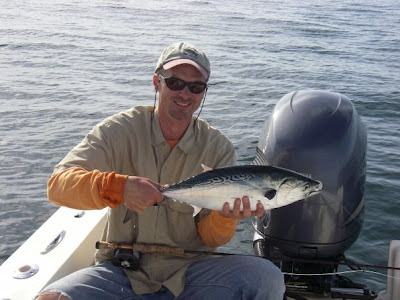Prior to going to Somerset NJ in January for the Fly Fishing Show I had an email from Captain Mark Dysinger who runs a blog called www.flyosophy.com with his good friend Sean Murphy.
So who are these guys?
“Captain
Mark Dysinger specializes in flyfishing for northern pike and smallmouth bass
in freshwater, and the northeast slam of striped bass, bluefish, and false
albacore in salt water. His enthusiasm and attention to detail make him a
popular instructor, and his topical presentations are both informative and
entertaining.
Captain
Mark has fished extensively across North America, and his works have appeared
in numerous print and online publications. He resides on the Connecticut coast
with his wife Anne and daughter Lucy.”
Mark wrote to me about BUG-BOND and wanted to share his experiences both at the vise and on the water… I am grateful to him for allowing me to share his comments and photographs with you…
Captain Mark Dysinger says:
“I must say that your product is by far the best fly tying resin available. I sing its praises to students of my many fly tying classes (I do many classes, both through North Cove Outfitters here in Connecticut and a few clubs) and while tying at fly shows. I stress how it lessens the learning curve in using resins compared to epoxies and even a couple of other light cured resins, which both leave a tacky finish. I also provide the details of my guide flies to clients on the water who would like to replicate them with their own tying....they are quite impressed with the clean finish, and also the translucence which can be so important in imitating marine baitfish. Some anglers can be pretty set in their ways in terms of tying materials, but results seem to get their attention.”
“False Albacore:
False albacore can become extremely selective, particularly when the bait clouds that they feed upon are not very thick. They typically attack from below, and fly sihouette is very important. Another important factor is translucency in a baitfish pattern so that ambient light can pass through, just as it does with real baitfish. Bug Bond cures clear at the head of a fly and enables the tyer to make nearly perfect bay anchovy imitations.
Striped Bass:

When striped bass feed on flats, they provide opportunities for sight fishing. Patterns typically imitate sand eels, shrimp, or crabs, and natural colors without much flash usually perform best. Because Bug-Bond can be applied as thinly or thickly as the tyer desires, it lets one create a durable finish that can be subtle or very glossy.
Pike:
My biggest concern with pike flies is durability. I want patterns that not only catch fish, but will catch many fish before potentially being torn to shreds. Bug-Bond offers this durability in one quick and easy step, without the need to treat any tacky finish after application and drying.”
Captain Mark runs a guide service in north east USA in Long Island Sound his information can accessed from his blog... I am grateful for his feedback and generously allowing me to put his email into print... thanks Mark.


